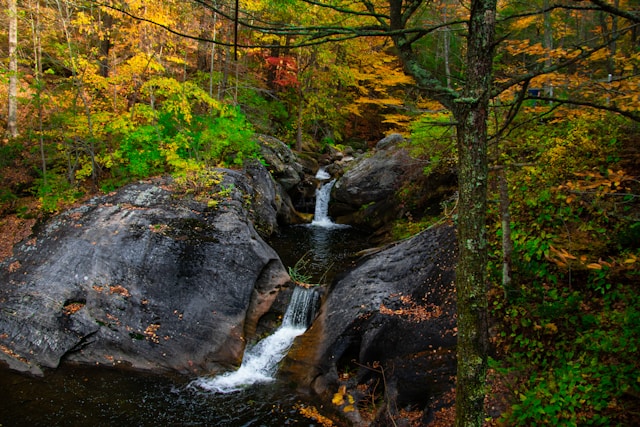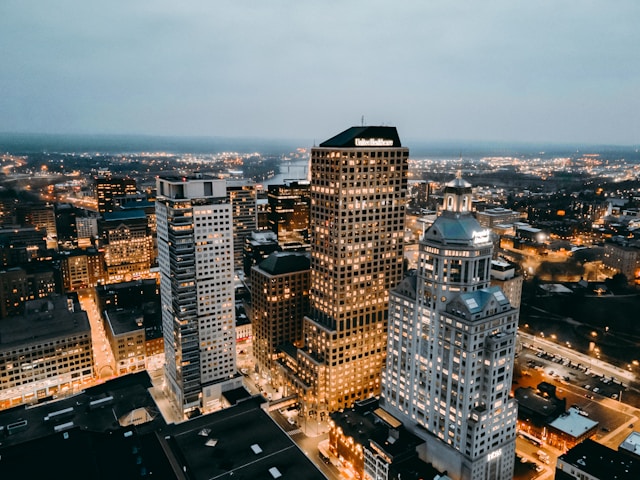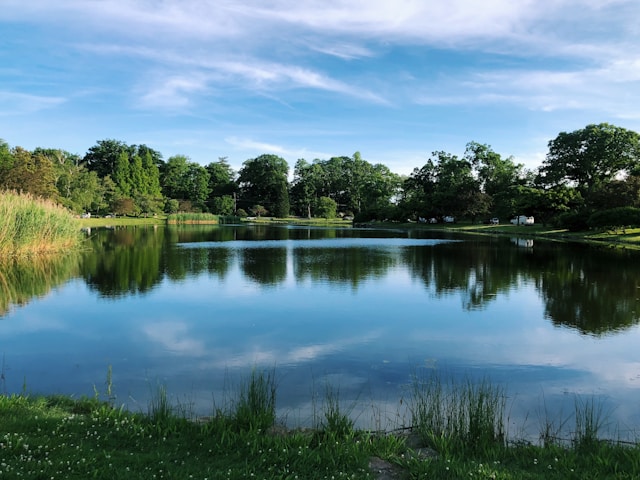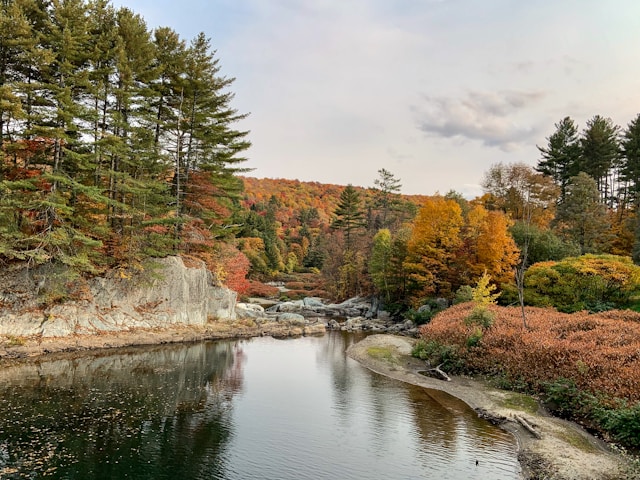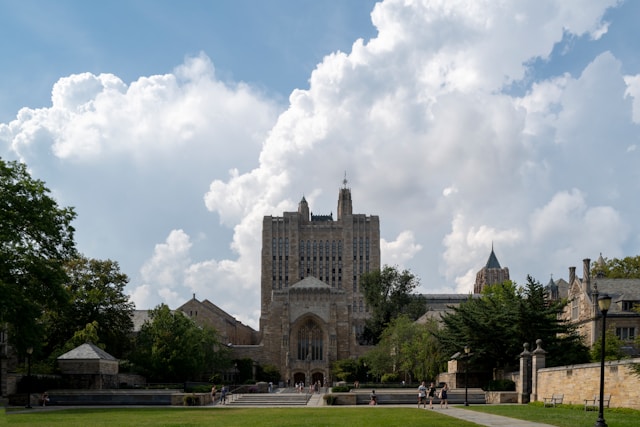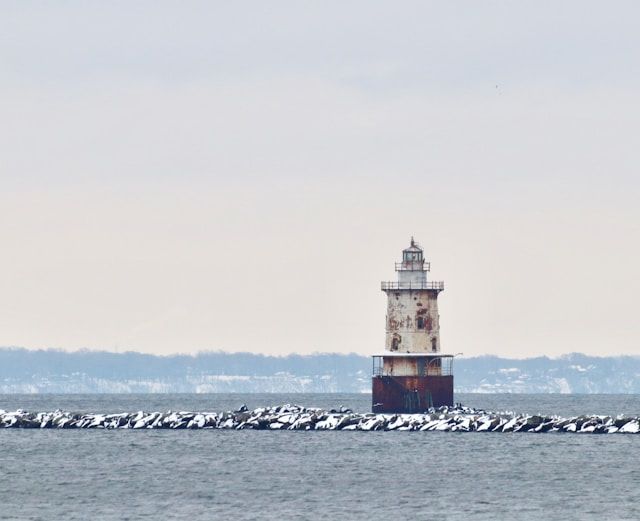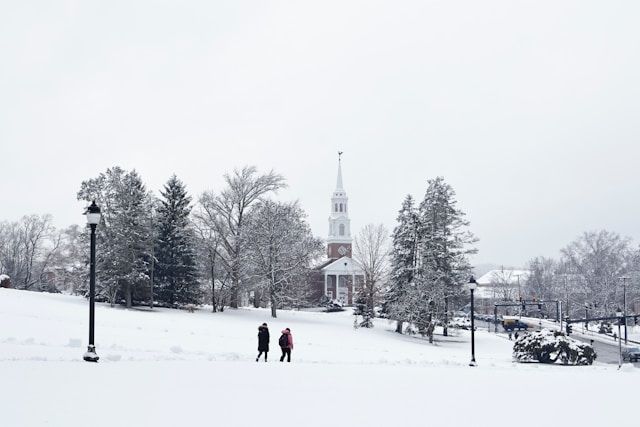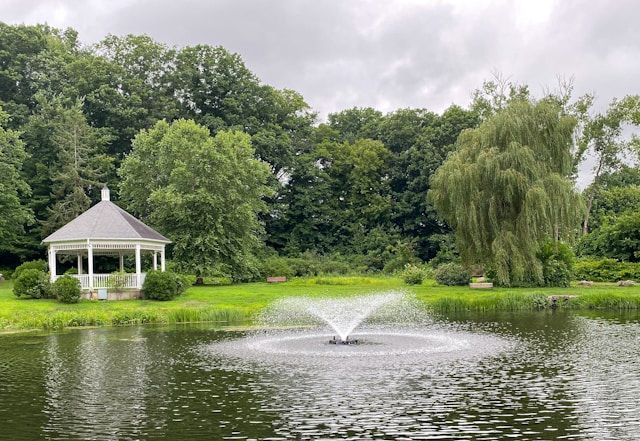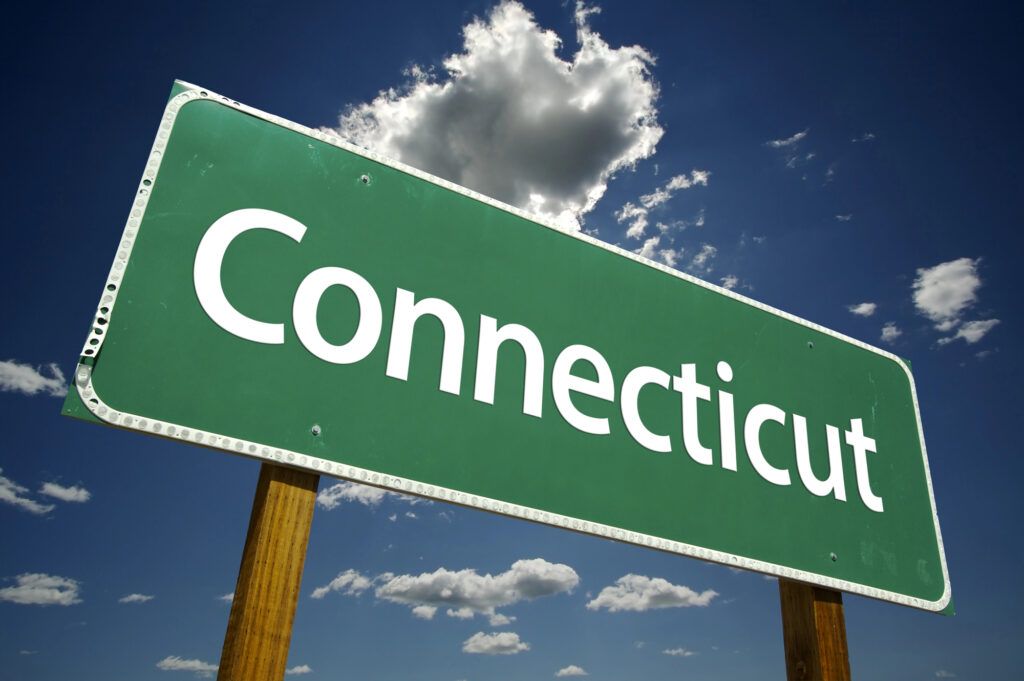
Connecticut, tucked away in New England as America’s third-smallest state, surprises a lot of people with how much it packs in. From quiet coastal towns along Long Island Sound to those hilly stretches up in the northwest, the Constitution State squeezes a ton of variety into its small footprint. With more than 3.6 million residents as of 2024, Connecticut manages to blend historic charm and modern life, all while keeping that unmistakable New England vibe.
The Nutmeg State’s location is a big plus—it’s wedged between Boston and New York City, so it’s a great home base for travelers with a wandering eye. You’ll stumble on family-friendly spots, romantic escapes, and cultural gems scattered across its towns and cities. The state’s four seasons mean you’ll get something different depending on when you pop by—think fiery autumn leaves or lazy days at the beach in summer.
Connecticut’s deep-rooted history is always close at hand, with colonial buildings standing side-by-side with modern attractions. You might find yourself checking out world-class museums in the morning, then heading off to hike a wooded trail by afternoon. Towns like New Haven and Storrs feel alive, thanks in part to the universities (the University of Connecticut, for starters). Whether you’re after outdoor fun or a dose of culture, Connecticut somehow manages to deliver more than you’d expect for its size.
Geography of Connecticut
Connecticut’s landscape is a mashup of coastline, river valleys, and rolling hills. For such a tiny state, there’s a lot going on.
Location and Borders
Connecticut sits down in the southern chunk of New England, up in the northeast US. It’s pressed up against Massachusetts to the north, Rhode Island to the east, New York to the west, and Long Island Sound to the south. That spot puts it right between some heavy-hitting metro areas, but it still feels very much like classic New England.
The state covers just 5,543 square miles, so it’s not winning any size contests. Still, it stretches about 110 miles east to west and 70 miles north to south at its widest.
Down south, Connecticut’s got 96 miles of shoreline along Long Island Sound, which means plenty of beaches and harbors—these have shaped the state’s culture in all sorts of ways.
Major Landforms and Features
The Connecticut River slices right through the middle, creating the Connecticut River Valley. This area’s fertile ground has been a big deal for farming over the years.
Head northwest and you’ll hit the foothills of the Berkshires, which are part of the Appalachian system. The highest spot in Connecticut is on Mount Frissell’s southern slope, at 2,380 feet above sea level. The peak itself is over in Massachusetts, but Connecticut claims the highest point on that slope.
Both the eastern and western edges are all about rolling hills and small, forested mountains. Litchfield County up in the northwest is known for its scenic landscapes, dotted with lakes and those picture-perfect towns.
Down along the coast, you’ll find coves and inlets that make for some pretty stunning shorelines. The lowest spot? Sea level, right where the land meets Long Island Sound.
Climate and Weather
Connecticut really gets all four seasons. Summers are warm and humid, with highs usually in the 80s°F. Winters can be cold, especially up in the northwest hills, and you’ll see your fair share of snow.
Spring brings blooming trees and a bit of relief from winter’s chill, while fall is the main event—those maples and beeches put on a show with their colors, usually peaking in October.
Rainfall is pretty steady all year, averaging 45-50 inches. The coast tends to feel a bit milder in winter and not quite as hot in summer compared to inland spots.
Up in Windham County, the so-called “Quiet Corner,” winters can get a bit colder than what you’ll find by the water.
Natural Resources and Ecosystems
Forests cover almost 60% of Connecticut, giving homes to everything from white-tailed deer to black bears and a long list of birds. That number was even higher before European settlers showed up.
The state’s rivers—especially the Connecticut River—have long been used for transportation and powering industry. These days, they’re just as important for recreation and wildlife.
The Connecticut River Valley has some of New England’s richest soil, so you’ll see plenty of farms growing veggies, fruit, tobacco, and dairy. It’s hard to beat the valley for farming.
Down by Long Island Sound, you’ll find salt marshes, beaches, and tidal flats, all buzzing with marine life. Middlesex County is a good example—coastal views and historic towns go hand-in-hand.
In places like Tolland County, you get a mix of farmland, forests, and small towns that really show off Connecticut’s rural side.
History of Connecticut
Connecticut’s history stretches back to Indigenous settlements and runs right through its time as an industrial heavyweight. This land’s seen thousands of years of human activity, from Native tribes to colonists and, eventually, statehood.
Pre-Colonial and Indigenous Peoples
People have lived in what’s now Connecticut for more than 12,000 years. The Algonquian-speaking tribes—Pequot, Mohegan, Narragansett, Quinnipiac, and others—built thriving communities across the region.
They hunted, fished, and farmed, growing corn, beans, and squash to keep their villages going strong. Most Native settlements were set up near water for easy transport, food, and trade. Their governments varied by tribe, with pretty complex social and political setups.
These days, you can visit museums and centers that keep Indigenous history alive. The Mashantucket Pequot Museum in Ledyard is one of the best places to dive into Native American history here.
Colonization and Early Settlement
Europeans started settling in the 1630s when Puritans from Massachusetts set up Windsor, Wethersfield, and Hartford. These towns joined forces under the Fundamental Orders of 1639—arguably America’s first written constitution.
The Dutch had their eye on the land too, but the English eventually took over. John Winthrop Jr. founded New London in 1646, pushing colonial influence along the coast.
The Connecticut Colony got a royal charter in 1662, which meant a good bit of self-rule. Relations with Native groups were a mixed bag—there was peace with some, but also conflict, especially during the Pequot War of 1637.
Farming was the backbone of early Connecticut, with settlements spreading through the fertile valleys. Towns like Farmington, Old Saybrook, and Old Lyme popped up during this era, laying the groundwork for the state we know now.
Role in the American Revolution and Statehood
Connecticut played a big role in the Revolution, earning the nickname “Provision State” for supplying the Continental Army with food, cannons, and gear. Governor Jonathan Trumbull was the only colonial governor who backed independence.
The state sent about 30,000 soldiers to fight—almost half its adult men. General Israel Putnam, a Connecticut native, became one of Washington’s go-to officers. British raids targeted several coastal towns during the war.
After the Revolution, Connecticut became the fifth state on January 9, 1788. Roger Sherman and Oliver Ellsworth, both from Connecticut, helped shape the U.S. Constitution with the “Connecticut Compromise” that set up our current Congress. If you swing by the State Capitol in Hartford, you’ll find exhibits showcasing these milestones.
Industrialization and Modern Growth
In the 19th century, Connecticut shifted from farming to industry. Yale grad Eli Whitney invented the cotton gin and popularized interchangeable parts, which changed manufacturing forever.
Textile mills sprang up along the rivers, especially out east. Connecticut earned a reputation for clock-making, firearms, and brass goods. Companies like Colt and Stanley Works made the state a manufacturing powerhouse.
Insurance also became a major player, with Hartford growing into the “Insurance Capital of the World.” Firms like Aetna and Hartford Fire Insurance (now The Hartford) got their start in the 1800s.
In the 20th century, defense industries boomed, especially during the world wars. These days, Connecticut still leads in aerospace, defense, and health care. Yale and other schools keep the state in the mix for research and innovation.
Major Cities and Regions
Connecticut’s got a handful of cities and regions, each with its own flavor. From the capital to the coast, you’ll find a surprising range of experiences packed into this little state.
Hartford and the Connecticut River Valley
Hartford County sits right in the middle, anchored by Hartford, the capital. With around 120,000 people, Hartford is the heart of state politics and the insurance industry. The Connecticut River cuts through the city, creating a valley that runs north to south.
Hartford’s got some eye-catching buildings, like the gold-domed State Capitol and the Mark Twain House. Nearby, Windsor Locks is home to the New England Air Museum.
The river valley is known for its rolling hills and rich farmland. Come fall, the changing leaves along the river are worth the drive.
New Haven and Yale University
New Haven County is home to New Haven, Connecticut’s third-largest city, with about 135,000 residents. Yale University is the big draw—its Gothic buildings give the city a unique feel, both classic and lively.
New Haven’s also famous for pizza. The city’s “apizza” (say it “ah-BEETZ”) draws food lovers to legendary joints like Frank Pepe and Sally’s Apizza.
But it’s not just about Yale and pizza—New Haven has cultural spots like the Yale University Art Gallery and the New Haven Green, a historic park that’s been around since 1638.
Coastal Cities: Bridgeport and New London
Connecticut’s coastline along Long Island Sound is home to a handful of key cities. Bridgeport, the largest, has about 148,000 residents and a blend of industrial roots and local attractions—think Beardsley Zoo or Captain’s Cove Seaport if you’re ever nearby.
Out east, New London County centers on the port city of New London. The city sits where the Thames River meets the Sound, and its maritime history runs deep. Ferries still cross from here to Long Island, keeping that old connection alive.
Along the coast, you’ll stumble on scenic beaches, seafood joints, and museums that nod to the region’s seafaring past. New London’s historic district, with its well-kept 18th and 19th-century buildings, almost feels like stepping back in time.
Other Notable Communities and Counties
Fairfield County in the southwest is known for its affluent suburbs and lively smaller cities. Greenwich, Westport, and Stamford all deliver on upscale shopping and dining. Stamford’s now Connecticut’s second-largest city, with about 136,000 people.
Stratford brings together coastal scenery and cultural sites, while Fairfield itself is all about beaches and a walkable, inviting town center.
Head northwest for Litchfield County’s rolling hills, quiet towns, and plenty of outdoor escapes. Or check out Putnam in the northeast, where antique shops and a rejuvenated downtown bring a different vibe.
Culture and Heritage
Connecticut’s culture is tangled up with its long history—colonial roots, literary icons, old estates, and a surprising number of museums. It’s produced some major writers, houses impressive art collections, and preserves historic sites that tell a chunk of America’s story.
Literature and Notable Figures
Mark Twain, easily one of the country’s most famous writers, lived in Hartford from 1874 to 1891. His Victorian Gothic house is now a museum, packed with personal artifacts and the desk where he wrote “Adventures of Huckleberry Finn” and “Tom Sawyer.”
Harriet Beecher Stowe, who wrote “Uncle Tom’s Cabin,” lived practically next door. Her home, too, is open to visitors and sheds light on her fight against slavery.
Other well-known Connecticut figures include:
- Noah Webster (the dictionary guy)
- Eugene O’Neill (playwright)
- Wallace Stevens (poet)
These writers found inspiration in Connecticut’s landscapes and social climate. Their connections to the state run deep, and their work left a real mark on American literature.
Museums and Arts
The Wadsworth Atheneum in Hartford, founded in 1842, claims the title of America’s oldest public art museum. Its collection spans 5,000 years—from European Baroque to Hudson River School landscapes and modern pieces. It’s a lot to take in, honestly.
Over in New Haven, the Yale University Art Gallery has everything from ancient artifacts to contemporary works. It’s free, too, which is always a win.
The Connecticut Museum of Culture and History digs into the state’s past with artifacts, documents, and hands-on exhibits. Their rotating displays cover everything from Indigenous cultures to the industrial era.
Scattered around the state, smaller museums dive into topics like maritime life and immigration stories. Each one brings a fresh angle to Connecticut’s cultural picture.
Historic Landmarks and Sites
Mystic Seaport Museum is an all-in experience in America’s maritime story. As the country’s leading maritime museum, it’s got a recreated 19th-century village, historic ships, and a working shipyard. Craftspeople still show off the skills that built New England’s nautical reputation.
Old Wethersfield’s historic district has more than 150 homes from before 1850. Wandering these streets, you can almost picture colonial life as it was.
In New Haven, the New Haven Green marks the city’s 1638 founding. Yale buildings and old churches surround the space, tying the modern city to its earliest days.
Gillette Castle, perched above the Connecticut River, is the odd, stone mansion built by actor William Gillette. The place is dramatic, quirky, and packed with personal touches reflecting its builder’s theatrical flair.
Recreation and Attractions
There’s no shortage of things to do in Connecticut, no matter the season. Whether you’re craving the outdoors, looking for family-friendly spots, or chasing live entertainment, the state packs a lot into its small borders.
Outdoor Activities and Nature
Nature lovers have plenty to explore. Connecticut offers over 100 state parks and 32 forests for hiking, biking, or just wandering. The highest point, Mount Frissell in the northwest, climbs up to 2,380 feet—modest, but the views are worth it.
Come fall, the countryside lights up with foliage. Folks flock to scenic drives in October, hoping to catch those fiery red and gold leaves at their peak.
Beaches line the Sound, with Hammonasset Beach State Park boasting two miles of sand for swimming or sunbathing. If you’re into water sports, you can kayak on the Connecticut River or sail along the coast. Fishing’s big too—lakes, rivers, the Sound—there’s always somewhere to cast a line.
Family and Kid-Friendly Destinations
Mystic Aquarium ranks high among family attractions. Kids (and adults, honestly) love the beluga whales, sea lions, and hands-on exhibits where you can touch stingrays.
Right next door, Mystic Seaport Museum lets kids clamber aboard historic ships and see craftspeople at work in a recreated coastal village. There’s something about old boats that never fails to capture young imaginations.
The Dinosaur Place at Nature’s Art Village is dotted with life-sized dinosaurs along woodland trails. In summer, the giant splash pad is a hit with kids who need to cool off.
Science centers in Hartford and New Haven have interactive exhibits that make learning fun. Hands-on activities keep the energy up and help science click for curious young minds.
Casinos and Entertainment
Connecticut’s two big casino resorts draw crowds year-round. Mohegan Sun in Uncasville features gaming, concerts, and all kinds of events.
Foxwoods Resort Casino in Mashantucket, run by the Mashantucket Pequot Tribal Nation, is one of North America’s largest. It’s not just about gambling—there’s shopping, dining, and plenty of entertainment on offer.
Both casinos bring in comedy, music, and sports events. They’ve started adding more family-friendly attractions too, so you don’t have to be a gambler to have a good time.
Theater fans can catch shows at classic venues like the Goodspeed Opera House in East Haddam or the Shubert Theater in New Haven. From Broadway favorites to new productions, there’s a lot happening onstage here.
Seasonal Events and Festivals
Connecticut’s event calendar stays packed. Spring brings flower festivals and outdoor concerts as the parks and gardens wake up from winter.
Summer means outdoor music, food festivals, and county fairs. Coastal towns throw seafood festivals, and the fresh catches are worth the trip.
Fall? That’s for harvest festivals, apple picking, pumpkin patches, and corn mazes. Orchards serve up cider and doughnuts—hard to resist.
In winter, holiday lights and festive markets take over. Mystic Seaport’s Lantern Light Tours and special train rides make the cold weather a little more magical.
Throughout the year, ethnic festivals pop up across the state, celebrating Connecticut’s mix of communities with food, music, and cultural displays.
Travel and Tourism Guide
Connecticut’s small size makes it easy to hop between attractions—coastal towns, city museums, and rural escapes are all just a short drive apart. You can cover a lot of ground without ever feeling rushed.
Transportation and Accessibility
Traveling here is pretty straightforward. Bradley International Airport in Windsor Locks is the main hub, with direct flights from plenty of U.S. cities. Amtrak trains link Connecticut to Boston and New York, usually in about 2-3 hours either way.
To get around, your options include:
- Rental cars: Best if you want to explore the countryside
- Public buses: Link up most cities and towns
- Shore Line East: Train service hugging the southern coast
- CTtransit: Covers urban areas with regular bus service
Highways I-95, I-91, and I-84 cut across the state, so driving is simple. Most places are within a couple of hours of each other. If you’re not renting a car, it’s easier to stick to cities like New Haven, Hartford, or Stamford, where public transit is more reliable.
Best Times to Visit
Connecticut changes with the seasons, each bringing its own highlights:
Fall (September-November): If you love foliage, this is the time. The hills explode with color, especially in mid-October. Days are cool (45-65°F), perfect for hikes and drives.
Summer (June-August): The coast comes alive, with temps in the 70s and 80s. Beaches get crowded, and towns host a steady stream of festivals and markets.
Spring (April-May): Flowers bloom, orchards wake up, and hiking trails dry out. Weather sits comfortably between 50-70°F.
Winter (December-March): Things slow down, and snow blankets the landscape. Museums and casinos are good indoor options when it’s cold (20-40°F isn’t unusual).
Local Cuisine and Dining
Connecticut’s food scene is a mix of coastal classics, farm-fresh ingredients, and global flavors. Try these local favorites if you get the chance:
- New Haven-style pizza: Thin, slightly charred, and best at Frank Pepe’s or Sally’s
- Seafood: Lobster rolls, clam chowder, and oysters are everywhere along the coast
- Apple cider donuts: A fall staple at orchards and farmers’ markets
Farm-to-table spots highlight whatever’s in season—think asparagus and strawberries in spring, corn and tomatoes in summer, apples and pumpkins in the fall.
For something different, check out historic taverns in smaller towns or waterfront restaurants along the Sound. Many places pour Connecticut-made craft beers and wines, which pair well with the local fare.
Government and Economy
Connecticut’s government and economy reflect its deep-rooted traditions and ongoing change. The state built its reputation on manufacturing but now balances old industries with new ones, all while sticking to a steady, established way of running things.
State Government and Administration
Connecticut runs under a constitution that splits power among the executive, legislative, and judicial branches. The governor leads the executive branch, with the current term running through January 2027.
The legislature, made up of the House and Senate, meets at the State Capitol in Hartford. Connecticut’s nickname, the “Constitution State,” comes from its 1639 Fundamental Orders—arguably America’s first written constitution.
State agencies handle everything from education and transit to environmental protection. People sometimes call it the “Land of Steady Habits” thanks to its consistent, stable approach to governance.
Economic Sectors
Connecticut’s economy has come a long way since its colonial manufacturing days. The state’s 2025 GDP clocks in at $291.1 billion—a 2.4% bump from last year.
Some of the big industries here:
- Insurance and financial services: Hartford’s still called the “Insurance Capital of America”
- Manufacturing: Think aerospace, defense, submarines
- Health care: Major hospital systems, plus a decent amount of biomedical research
- Technology: Software and digital services are picking up steam
Connecticut’s growth lags behind the national pace, ranking 44th in GDP expansion between 2019 and 2024, with just 4.89%. Still, the state tries to lure businesses with grants and development programs.
Demographics and Population
About 3,605,944 people call Connecticut home in 2025. For a small state, that’s a lot of folks. Most people live in a handful of cities:
- Bridgeport – Biggest city by far
- New Haven – Yale’s backyard
- Hartford – The capital
- Stamford – Lots of corporate offices
There’s a real mix here—busy cities, upscale suburbs, and little rural towns all packed within state lines. Connecticut’s population skews older than the national average, which brings its own set of challenges (and a few opportunities) for health care and service industries.
Median household income stays above the national average, thanks to all those high-skill jobs and economic development in specialized sectors.
Connecticut’s Legacy and Identity
Connecticut’s got a layered history and a pretty unique culture, shaped over centuries. Its identity draws from Indigenous roots, colonial heritage, and a steady influence on America’s story.
Nicknames and Symbols
This state goes by a bunch of nicknames, each with a story. “Constitution State” tips its hat to the Fundamental Orders of 1638—arguably the first written constitution in America. “Nutmeg State” is a cheeky nod to those crafty peddlers who supposedly sold fake wooden nutmegs.
Then there’s the “Land of Steady Habits,” which captures Connecticut’s reputation for sticking to tradition. That phrase popped up in the early 1800s, a wink at the state’s steady political and social patterns.
The name “Connecticut” itself comes from the Mohegan word “Quinnitukqut,” or “long tidal river,” which honors the Indigenous people who first lived here. That connection still matters to a lot of folks in the state.
Influence in American History
Connecticut had a big hand in shaping early America. As one of the original thirteen colonies, it helped lay the groundwork for the country.
During the Revolution, people called it the “Provision State” because it sent so many resources to the Continental Army. The state also backed the Union during the Civil War, providing both people and supplies.
Connecticut’s industrial breakthroughs made waves—Eli Whitney’s cotton gin, for example, and the state’s firearms factories changed American industry for good. Its factory system set the pace for early manufacturing in the U.S.
If you like history, you can still find loads of historic places across Connecticut: colonial homes, manufacturing museums, old battlefields—the past is never too far away here.
Modern Connecticut
Connecticut today juggles its deep-rooted history with a set of modern headaches. Sure, it’s one of the richest states in the country, but that wealth isn’t spread evenly—there’s a stark gap between its comfortable suburbs and tougher city neighborhoods.
Honestly, Connecticut still seems unsure about where it fits in. Is it New England? Part of the tri-state? That in-between feeling, while a little confusing, kind of gives the state its quirky flavor.
Back in 2020, Connecticut made headlines with a COVID-19 response that leaned pragmatic—maybe not flashy, but focused. These days, the state keeps plugging away at old problems like outdated transportation and uneven economic growth.
Some recent laws hint at shifting priorities. For instance, the state Senate passed a bill pushing colleges to share data on legacy admissions. It’s a move that says, hey, maybe it’s time for college access to be about merit, not just family ties.

